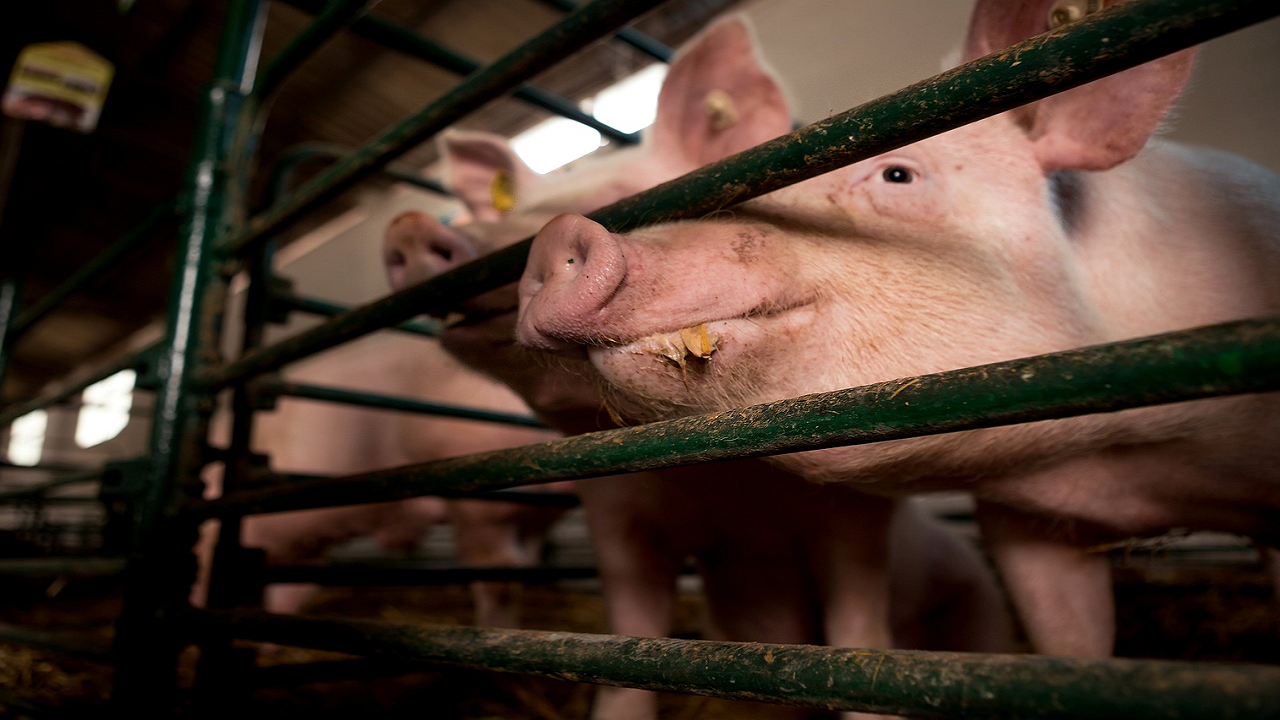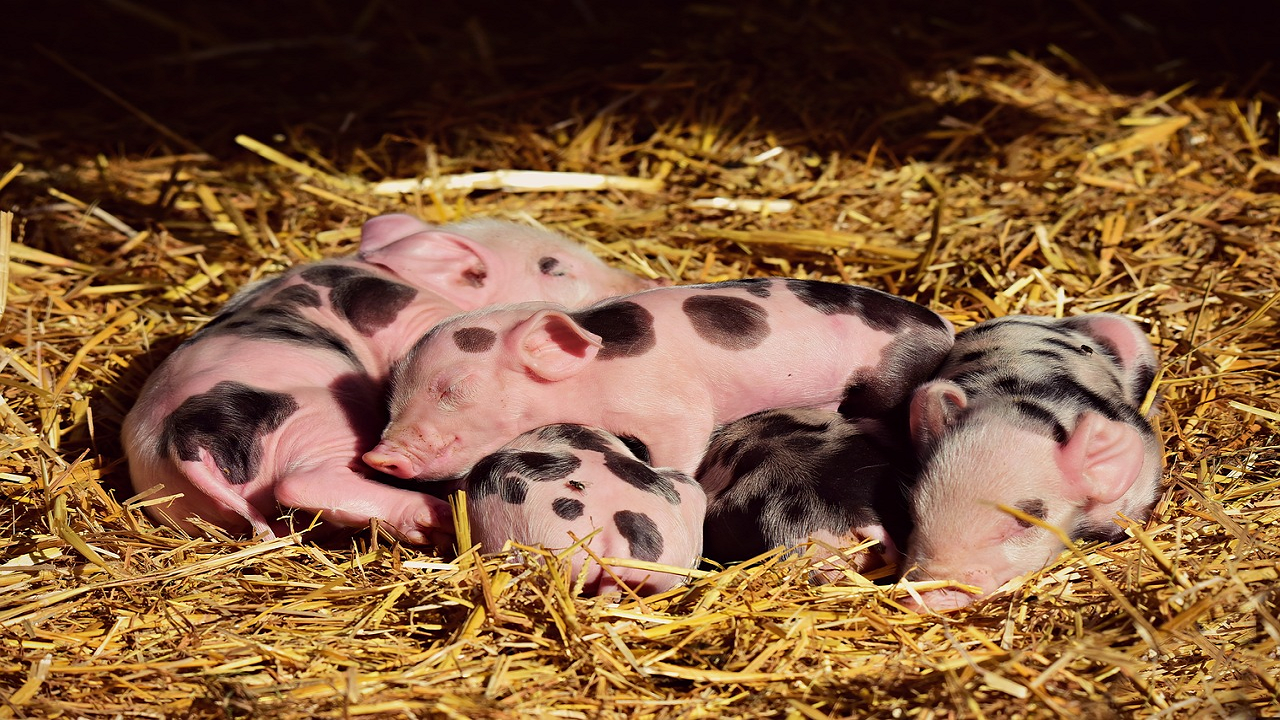
Pig farming, also known as swine production, is a dynamic and rewarding agricultural practice that involves raising domestic pigs for various purposes, including meat production, breeding, and research. With a history dating back thousands of years, pig farming has evolved into a sophisticated industry that combines traditional husbandry practices with modern advancements in genetics, nutrition, and animal welfare.
Whether you're a novice enthusiast or considering entering the pig farming business, this introductory guide will provide you with essential insights into the fascinating world of pig farming, exploring its key elements, management practices, and the immense potential for sustainable and profitable swine production. So, put on your boots and let's delve into the exciting realm of pig farming!
Pig Farming Market Size in India
According to the 20th Livestock Census data, India has a total of 9.06 million pigs, contributing to the global pig population of 784.20 million in 2022. The pig population in India experienced significant growth between the 10th and 11th Livestock Census, thanks to breeding schemes that raised awareness about the benefits of pig farming. However, since 2003, there has been a declining trend in the overall pig population in India. Nonetheless, certain states, including Assam, Jharkhand, Meghalaya, West Bengal, Chhattisgarh, Uttar Pradesh, Nagaland, Bihar, Karnataka, and Mizoram, have witnessed an increase in pig population compared to previous livestock censuses.
Indigenous Pigs
In India, indigenous and non-descript pigs contribute to about 79.03% of the total pig population. The National Bureau of Animal Genetic Resources recognizes 10 indigenous pig breeds in India, including Agonda Goan, Doom, Ghoongroo, Gurrah, Mali, Niang Megha, Nicobari, Purnea, Tenyi-Vo, and Zovawk. These breeds are locally reared by farmers throughout the country and are well-adapted to the extreme weather conditions of India. They are smaller in size, mature early, exhibit good mothering abilities, and possess enhanced disease resistance, which is crucial in livestock farming.
However, while these indigenous breeds exhibit disease resistance, their production performances are relatively lower compared to exotic breeds. To improve production performance, exotic breeds have been imported through various government and non-government organizations, following the recommendations of the National Commission on Agriculture (NCA).

The highest concentration of pig population is found in eastern and northeastern states, accounting for 72.21% of the total, followed by northern southern (10.68%), central (7.64%), northern (6.79%), and western India (2.69%). Assam has the highest pig population with 2.10 million, followed by Jharkhand (1.28 million), Meghalaya (0.70 million), and West Bengal (0.54 million).
Indigenous pigs are the cornerstone of pork production in India, accounting for 79.03% of the total, followed by crossbred and exotic germplasm (20.95%). While there has been an overall decline of 12.03% in the pig population compared to the last census, major pig-producing states have shown an increase in population. These states include Assam, Meghalaya, Mizoram, Kerala, Jharkhand, Chhattisgarh, Andaman and Nicobar Islands, and Punjab.
Costs Involved To Start A Medium Scale Pig Farm
-
Cost for 20 pigs and 1 boar – Rs. 1,00,000
-
Cost involved in shed construction – Rs. 1,50,000
-
Cost of equipment – Rs. 30,000
-
Vaccination cost – Rs. 20,000
-
Cost for feeding – Rs. 1,50,000
-
Water management cost – Rs. 50,000
-
Labour charges – Rs. 20,000
-
Miscellaneous cost – Rs. 20,000
Advantages of Pig Farming in India
Pig farming in India offers a multitude of benefits, contributing to both the agricultural sector and the overall economy. Here are some key advantages of pig farming in India:
-
High profitability: Pig farming has emerged as a highly profitable venture in India due to the increasing demand for pork products. Meat has gained popularity as a nutritious and affordable source of protein, leading to significant market demand. This presents lucrative opportunities for pig farmers to generate substantial income and improve their livelihoods.
-
Efficient feed conversion: Pigs are known for their efficient feed conversion rate, meaning they can convert feed into meat more efficiently compared to other livestock. This characteristic makes pig farming economically viable, as it reduces feed costs and maximizes meat production.
-
Utilization of agricultural by-products: Pig farming allows for the efficient utilization of agricultural by-products and waste. Pigs have the ability to consume a wide range of feed sources, including crop residues, kitchen waste, and agricultural by-products. This not only helps in reducing waste but also provides an additional source of income for farmers by converting these materials into valuable meat and manure.
-
Fast growth rate: Pigs have a relatively short gestation period and rapid growth rate, allowing for a quick turnaround in production cycles. This means that farmers can rear and sell pigs within a shorter span of time, leading to a faster return on investment and increased production capacity.
-
Diversification of income: Pig farming offers farmers an opportunity to diversify their income sources. By integrating pig farming into their existing agricultural practices, farmers can create a balanced income portfolio, reducing the reliance on a single crop or livestock species. This diversification helps in mitigating risks and enhancing overall financial stability.
-
Employment generation: Pig farming has the potential to generate significant employment opportunities, particularly in rural areas. From the rearing and management of pigs to the processing and marketing of pork products, the industry provides employment for a range of skilled and unskilled workers, thereby contributing to rural livelihoods and economic growth.
-
Organic manure production: Pig manure is a rich source of organic fertilizer. By collecting and composting pig waste, farmers can produce nutrient-rich manure that can be used to enhance soil fertility and improve crop productivity. This promotes sustainable farming practices and reduces the reliance on chemical fertilizers.
List Of Schemes And Loan Facilities Available For Pig Farming In India:
-
Entrepreneurship Development & Employment Generation (EDEG)
-
NABARD Subsidiary for Pig Farming
-
State Bank of India (SBI) Loan For Pig Farming
















